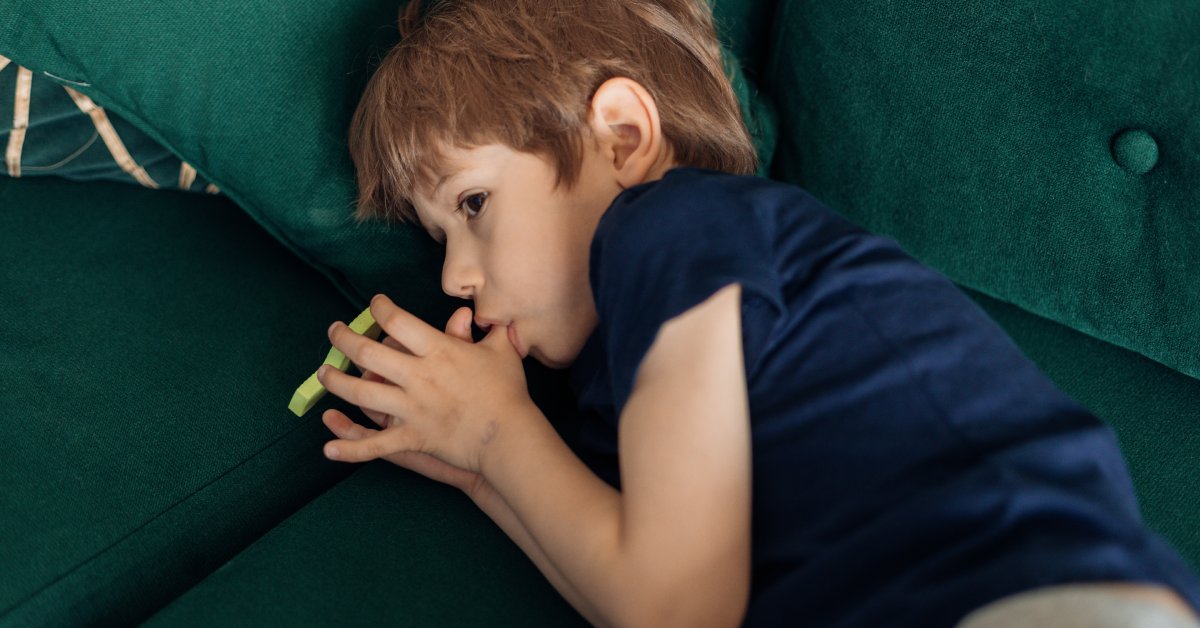We all cope with stress and discomfort in different ways, and some of us use physical acts to calm ourselves. For adults, this may mean tapping your fingers on your desk or clicking a pen, and for children, it can be thumb-sucking. Fidgeting and other repetitive movements often help reduce stress, but habit-forming methods such as thumb-sucking can be unhealthy. Continue reading to discover why behavioral fidgets can serve as a form of self-soothing.
Refocuses Attention
Fidgeting supports mental focus by redirecting wandering thoughts with physical movement. Often, performing repetitive movements stimulates areas of the brain that help us concentrate, which in turn redirects our focus. This means that fidgeting shifts attention away from the stressor and onto the task at hand.
Feeds the Body’s Need
Another reason behavioral fidgets are self-soothing is that they help meet the body’s need for movement. During moments of stress or discomfort, movement is often our body’s natural fight-or-flight response. As adults, we may show this through physical behaviors like pacing, tapping our foot, or clicking a pen; most children respond by hair twirling, leg bouncing, or thumb sucking.
For example, thumb sucking is a common fidget that occupies the child’s body and releases feel-good hormones. However, this habit can quickly become addictive due to the natural chemical rush that it produces. Not to mention, this habit can damage your child’s developing jaw by altering its shape.
Parent Tip
TGuard’s thumb-sucking glove is the ideal solution for combating thumb-sucking habits. This painless, non-restrictive device slides over your child’s hands and prevents the pleasurable suction that comes with thumb sucking.
Releases Nervous Energy
Sitting with pent-up nervous energy is uncomfortable at any age but can be especially hard for children. During childhood, we’re still trying to understand the world, emotions, and our minds. Every life can feel stressful at times, especially when you’re new to the world. Fidgeting provides a physical release to some of that energy, helping children feel calmer and more at ease.
Healthy Fidgets Are Grounding
Like any behavior, some fidgets are healthier than others, and you want your child to avoid those that are bad for them. Behavioral fidgets, such as thumb sucking, nail-biting, and hair twirling, are common “go-to’s” for children. But these habits can cause physical harm or put them at risk for illness.
If your child tends to fidget, consider introducing healthy options such as:
- Stress ball
- Fidget spinner
- Chewable necklace or pencil topper
- Fidget cube
These alternatives can provide the same sensory input and promote relaxation without the negative consequences of unhealthy fidgeting behaviors.
Give It Time
Finding the perfect alternative to your child’s behavior fidget can take time, especially if they’ve conditioned themselves to rely on the action. If your child sucks their thumb or finger, it may take a while for them to get used to the new chewable necklace or fidget cube. Be patient and encouraging as they adjust to the change.
Try exploring various options with your child to see which one they prefer and feel most comfortable with. Be open-minded and adaptable in your approach to finding a suitable fidget for your child’s behavior.




